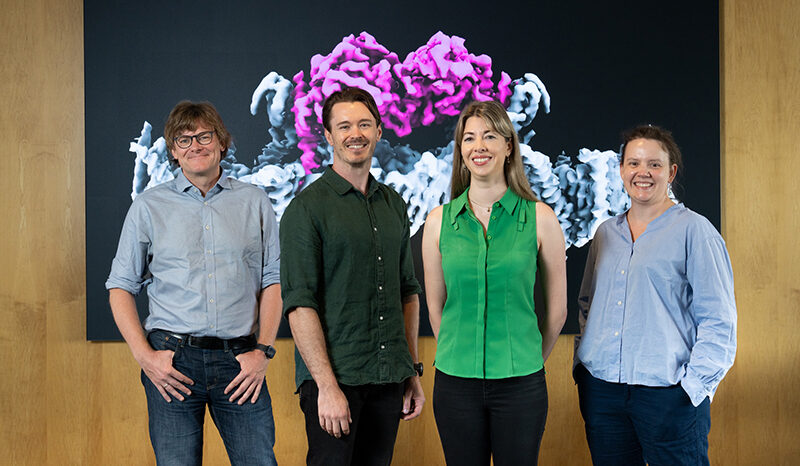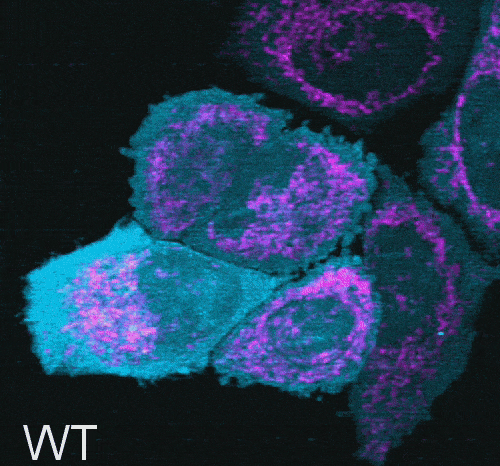Black KA, Nguyen JV, Ramsey JR, Tovey JC, Cameron DL, Alexandrovics J, Glukhova A, Papenfuss AT, Call MJ, Young R, Call ME. Resolution of a T1-Like Bacteriophage Outbreak by Receptor Engineering. Molecular Biotechnology. 2025;:10.1007/s12033-025-01453-1
Callegari S, Kirk NS, Gan ZY, Dite T, Cobbold SA, Leis A, Dagley LF, Glukhova A, Komander D. Structure of human PINK1 at a mitochondrial TOM-VDAC array. Science. 2025;388(6744):10.1126/science.adu6445
Bennetts FM, Venugopal H, Glukhova A, Mobbs JI, Ventura S, Thal DM. Structural insights into the human P2X1 receptor and ligand interactions. Nature Communications. 2024;15(1):10.1038/s41467-024-52776-7
Meng Y, Garnish SE, Davies KA, Black KA, Leis AP, Horne CR, Hildebrand JM, Hoblos H, Fitzgibbon C, Young SN, Dite T, Dagley LF, Venkat A, Kannan N, Koide A, Koide S, Glukhova A, Czabotar PE, Murphy JM. Phosphorylation-dependent pseudokinase domain dimerization drives full-length MLKL oligomerization. Nature Communications. 2023;14(1):10.1038/s41467-023-42255-w
Mobbs JI, Black KA, Tran M, Burger WAC, Venugopal H, Holman TR, Holinstat M, Thal DM, Glukhova A. Cryo-EM structures of human arachidonate 12S-lipoxygenase bound to endogenous and exogenous inhibitors. Blood. 2023;142(14):10.1182/blood.2023020441
Burger WAC, Pham V, Vuckovic Z, Powers AS, Mobbs JI, Laloudakis Y, Glukhova A, Wootten D, Tobin AB, Sexton PM, Paul SM, Felder CC, Danev R, Dror RO, Christopoulos A, Valant C, Thal DM. Xanomeline displays concomitant orthosteric and allosteric binding modes at the M4 mAChR. Nature Communications. 2023;14(1):10.1038/s41467-023-41199-5
Tran M, Yang K, Glukhova A, Holinstat M, Holman T. Inhibitory Investigations of Acyl-CoA Derivatives against Human Lipoxygenase Isozymes. International Journal of Molecular Sciences. 2023;24(13):10.3390/ijms241310941
Vuckovic Z, Wang J, Pham V, Mobbs JI, Belousoff MJ, Bhattarai A, Burger WA, Thompson G, Yeasmin M, Nawaratne V, Leach K, van der Westhuizen ET, Khajehali E, Liang Y-L, Glukhova A, Wootten D, Lindsley CW, Tobin A, Sexton P, Danev R, Valant C, Miao Y, Christopoulos A, Thal DM. Pharmacological hallmarks of allostery at the M4 muscarinic receptor elucidated through structure and dynamics. eLife. 2023;12:10.7554/elife.83477
Zhang L, Mobbs JI, May LT, Glukhova A, Thal DM. The impact of cryo-EM on determining allosteric modulator-bound structures of G protein-coupled receptors. Current Opinion in Structural Biology. 2023;79:10.1016/j.sbi.2023.102560
Pymm P, Redmond SJ, Dolezal O, Mordant F, Lopez E, Cooney JP, Davidson KC, Haycroft ER, Tan CW, Seneviratna R, Grimley SL, Purcell DFJ, Kent SJ, Wheatley AK, Wang L-F, Leis A, Glukhova A, Pellegrini M, Chung AW, Subbarao K, Uldrich AP, Tham W-H, Godfrey DI, Gherardin NA. Biparatopic nanobodies targeting the receptor binding domain efficiently neutralize SARS-CoV-2. iScience. 2022;25(11):10.1016/j.isci.2022.105259






